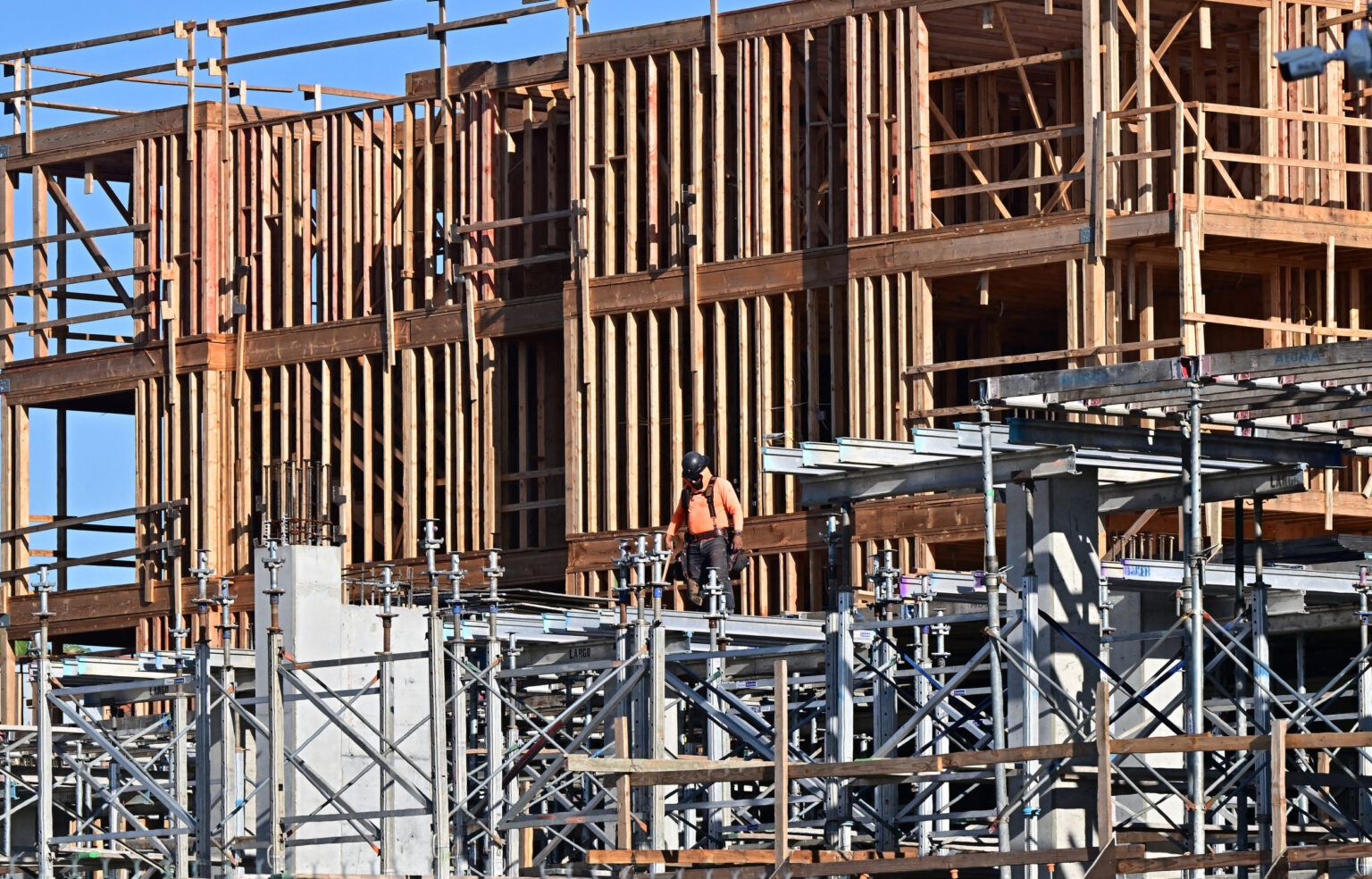American homebuilders are bracing for the impact of a budding trade war with China as President Donald Trump threatens to hit Beijing with a 50 percent additional levy on its imported goods, unless it takes back its 34 percent reciprocal tariff.
“While the complexity of these reciprocal tariffs makes it hard to estimate the overall impact on housing, they will undoubtedly raise some construction costs,” Buddy Hughes, chairman of the National Association of Home Builders, told Realtor.com.
Why It Matters
In the years following the Great Recession, the U.S. supply of new homes has not kept up with demand, contributing to the creation of the current housing affordability crisis, exacerbated by rising prices and historically high mortgage rates.
While Trump ran in the 2024 presidential election with the promise of lowering housing costs and boosting inventory levels, some of his policies—especially tariffs—are likely to increase the cost of key materials used in homebuilding, discouraging the construction of new homes and bringing up overall housing costs for Americans.
What To Know
On April 2, Trump announced a 10 percent baseline tariff on all goods imported to the U.S., with exceptions for certain countries, including China, which will face higher levies. The president had already hit Beijing with two rounds of 10 percent tariffs on its goods, to which he added a 34 percent tariff that will come into effect on Wednesday.
China pushed back, announcing a 34 percent tariff on the imports of all U.S. goods starting on April 10. The trade war between the two countries could escalate, as Trump threatened to add another 50 percent levy on imported Chinese goods if Beijing did not rescind its retaliatory tariffs—a move that China described as “blackmail.”
This tariff tit-for-tat between the two countries could have a disastrous impact on the U.S. housing market, especially when it comes to the construction of new homes. The cost of building materials has already risen by 34 percent since December 2020, much higher than the rate of inflation, and homebuilders fear that these tariffs would aggravate the situation.
What Will Be Impact of These Tariffs?
A spokesperson for the National Association of Home Builders (NAHB) told Newsweek that 22 percent of imported building materials for the residential construction industry come from China.
While it is too soon to estimate the price effects of these new tariffs, the association is bracing for higher costs as a result of Trump’s levies on goods coming from countries that provide the U.S. with key construction materials, including China, Canada, and Mexico.
NAHB estimates that $204 billion worth of goods were used in the construction of both new multifamily and single-family housing last year; $14 billion of those goods were imported from outside the U.S., the association said. This means that about 7 percent of all goods used in new residential construction originate from a foreign nation.
According to the association’s estimates, a new single family home includes $174,155 worth of building materials, including $12,713 of imported materials.
Putting a tax on imported goods—which is what a tariff does—is bound to raise prices on building materials, “and consumers end up paying for the tariffs in the form of higher home prices,” NAHB wrote in a recent report.
While Canada and Mexico provide a large part of the softwood lumber and gypsum used in the U.S. for new home construction, numerous raw materials and components, ranging from steel and aluminum to home appliances, come from China.
What People Are Saying
Realtor.com Chief Economist Danielle Hale said of China’s retaliatory tariffs: “What this signals for U.S. consumers is that China may be unwilling to negotiate over the tariffs, thus the proposed duties have a higher likelihood of sticking around. Homebuilders and consumers will experience this in the form of higher costs for home appliances as well as lighting and other home decor that could stick around.”
Redfin Chief Economist Chen Zhao said in a statement: “In general, tariffs increase the cost of constructing a new home, pushing home prices up and depressing housing supply at a time when the housing market is already unaffordable for many. This is especially true in the context of the government’s stricter immigration policies that limit the supply of construction labor—traditionally heavily dependent on undocumented immigrants—and increase construction wages.”
She added: “Whether this is all passed on to the consumer depends on whether the housing market allows them to sell homes for higher prices. If they can’t, they will need to absorb it in their margins, which would result in less building.”
A commerce ministry spokesperson said on Tuesday, as mentioned by the U.K. newspaper Financial Times: “If the U.S. proceeds with implementing these escalated tariff measures, China will resolutely take countermeasures to safeguard its own rights and interests. If the U.S. insists on going its own way, China will fight to the end.”
Federal Reserve Chairman Jerome Powell said on Friday of Trump’s tariffs: “While tariffs are highly likely to generate at least a temporary rise in inflation, it is also possible that the effects could be more persistent. Avoiding that outcome would depend on keeping longer-term inflation expectations well anchored, on the size of the effects, and on how long it takes for them to pass through fully to prices.”
What Happens Next
Before Trump announced a new round of tariffs, NAHB was already considering that levies on China, Canada, and Mexico would raise the cost of imported construction materials by more than $3 billion, with some material expected to see dramatic price increases. This number would need to be revised should new tariffs be imposed by the Trump administration.
A March survey found that builders expect recent tariff announcements to bring up the cost of building a home by $9,200.
Read the full article here

